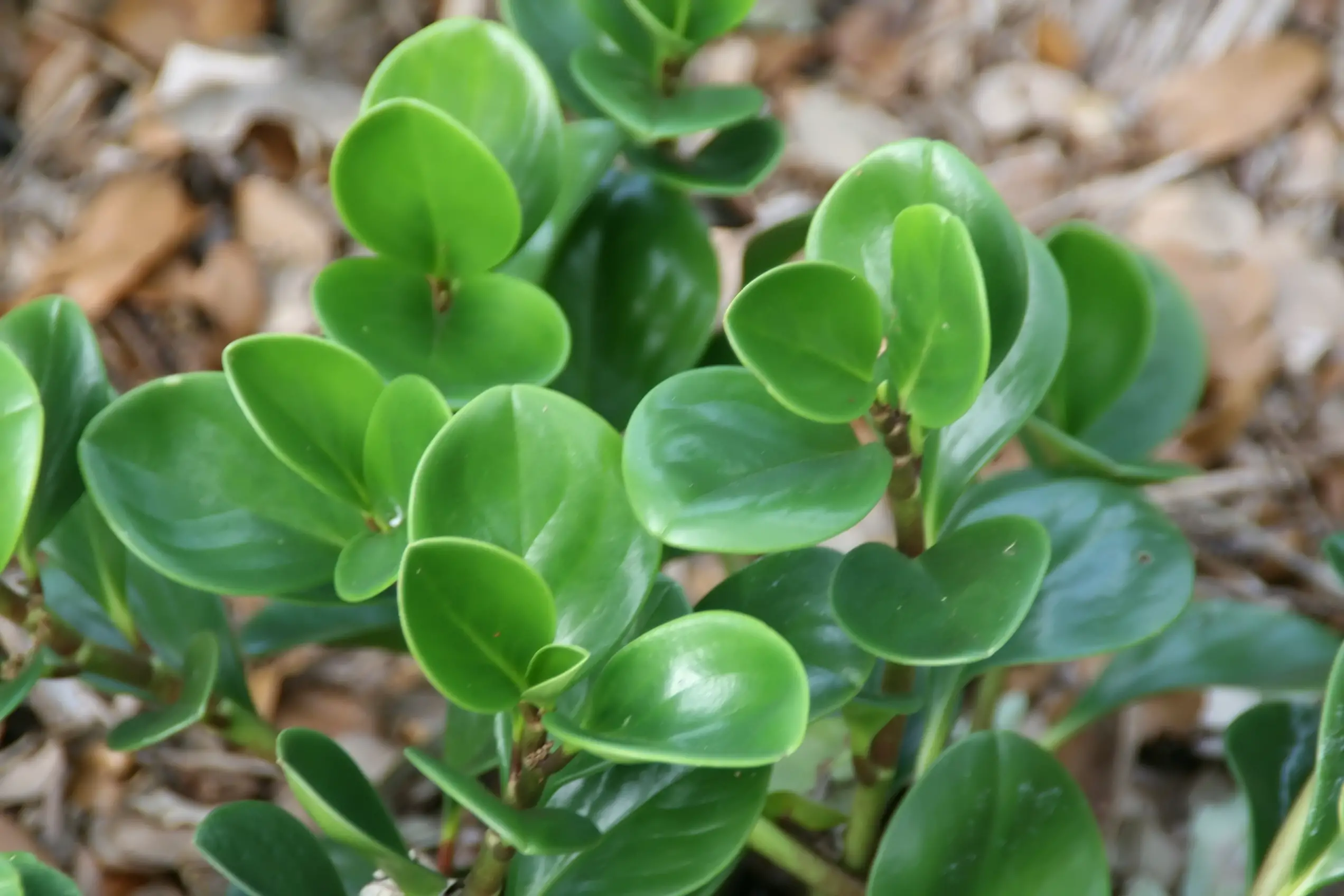The Baby Rubber Plant, with its glossy, thick, succulent-like leaves, is a popular indoor houseplant. Scientifically known as Peperomia obtusifolia, it belongs to the Piperaceae family and is native to South America. Its compact growth and attractive foliage make it an ideal choice for interior decoration.
Unlike its name suggests, the Baby Rubber Plant is not actually related to the more commonly known rubber plant (Ficus elastica), but gets its name from the similar texture and appearance of its leaves. The plant has a bushy appearance and usually grows to about 8-10 inches in height. It’s available in both green-leaved and variegated forms.
The Baby Rubber Plant is often prized for its ease of care. It’s able to tolerate a range of indoor conditions and isn’t particularly demanding in terms of water, light, or nutrients. This makes it suitable for both novice gardeners and those without a lot of time to dedicate to plant care.
| Attribute | Details |
|---|---|
| Common Names | Baby Rubber Plant, Blunt-leaved Peperomia, American Rubber Plant |
| Botanical Name | Peperomia obtusifolia |
| Family | Piperaceae |
| Plant Type | Perennial |
| Mature Size | 8-10 inches tall |
| Sun Exposure | Bright, Indirect Light |
| Soil Type | Well-Drained |
| Hardiness Zones | 10-12 |
| Native Area | South America |
Baby Rubber Plant Care
Baby Rubber Plants are low-maintenance and can thrive in a variety of indoor conditions. They prefer bright, indirect sunlight, but can tolerate lower light levels as well. These plants like well-drained soil and should be watered sparingly, as they are somewhat drought-tolerant.
The Baby Rubber Plant has succulent-like leaves that store water, so it’s essential not to over-water. Too much moisture can lead to root rot, so allowing the soil to dry out slightly between waterings is advisable. Regular feeding is not typically required; a light feeding in the spring and summer months is usually sufficient.
Light Requirement for Baby Rubber Plant
The Baby Rubber Plant thrives in bright, indirect sunlight. It can tolerate lower light levels but may become leggy or lose its vibrant color. If placed in direct sunlight, the leaves may become scorched, so it is best to avoid this.
Soil Requirements for Baby Rubber Plant
Well-drained soil is essential for the Baby Rubber Plant. A mixture of potting soil with some added sand or perlite will provide the drainage needed. Heavy soils that retain water can lead to root rot and should be avoided.
Water Requirements for Baby Rubber Plant
Water sparingly and allow the soil to dry out slightly between waterings. Over-watering can cause the roots to rot, so it’s better to err on the side of caution and keep the soil slightly on the dry side.
Temperature and Humidity
Baby Rubber Plants prefer temperatures between 65-75°F (18-24°C). They can tolerate lower humidity levels but will thrive in a more humid environment. Regular misting or placing a humidifier nearby can enhance growth.
Fertilizer
Feed lightly with a balanced liquid fertilizer during the growing season, typically in spring and summer. Over-fertilizing can lead to leggy growth and should be avoided.
Pruning Baby Rubber Plant
Pruning is not generally necessary but can be done to shape the plant or remove any dead or damaged leaves. Pinching back the stems can encourage a bushier growth pattern.
Propagating Baby Rubber Plant
Propagation is easily done through stem or leaf cuttings. Cut a healthy leaf with an inch of stem, let it dry for a day, then plant in well-draining soil. Water lightly until established.
How To Grow Baby Rubber Plant From Seed
Growing from seed is rarely practiced, as propagation through cuttings is faster and more reliable.
Common Pests & Plant Diseases
Mealybugs
They can be treated with insecticidal soap or neem oil.
Fungal Diseases
Caused by over-watering, these can be avoided by allowing the soil to dry between waterings.
Common Problems With Baby Rubber Plant
Yellow Leaves
This can be a sign of over-watering. Allow the soil to dry out more between waterings.
Leggy Growth
If the plant is growing too tall and thin, it may need more light. Move it to a brighter location.
Pro Tips
- Avoid over-watering; let the soil dry slightly between waterings.
- Provide bright, indirect light for vibrant foliage.
- Use well-drained soil to prevent root rot.
- Prune only if needed to shape the plant or remove dead leaves.
- Enjoy the plant’s low-maintenance nature – it’s great for beginners!




